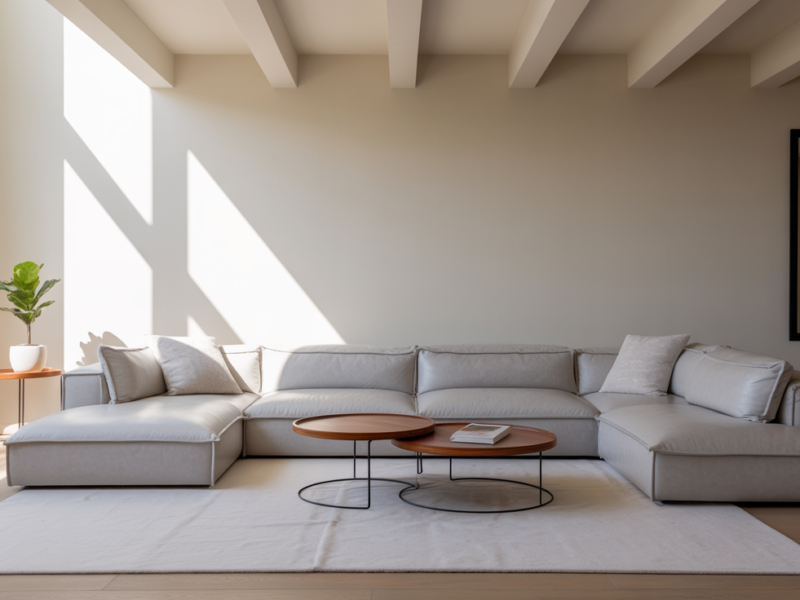Did you know 54% of Americans feel “visually stressed” by clutter in their homes? That’s over half the population tripping over mismatched socks and expired coupons. But here’s the kicker: research shows clearing physical chaos can reduce anxiety by 30% in under two days. Yeah, you read that right – two days.
We’ve cracked the code for a lightning-fast reset. Forget months-long projects – our approach blends military-grade efficiency with Sunday morning chill vibes. Whether you’re drowning in kid toys or battling a closet avalanche, this isn’t about perfection. It’s about creating breathing room fast.
Time management hacks? Check. Pro tips from organizers who’ve tackled hoarder-level messes? Double check. We’ll show you how to sort essentials from emotional baggage (looking at you, 2008 concert tees) without losing your cool. Even if your place currently resembles a storage unit explosion, we’ve got you.
Key Takeaways
- Rapid decluttering boosts mental clarity as effectively as meditation
- Strategic zoning prevents overwhelm in busy households
- Three-box sorting systems slash decision fatigue
- Vertical storage solutions maximize small spaces instantly
- 15-minute “power sweeps” maintain momentum between tasks
Introduction to a Quick Weekend Declutter
Ever walked into a room and immediately felt your shoulders tighten? That’s your stuff staging a silent rebellion. Here’s the good news: reshaping your house doesn’t require a month-long crusade. Country Living’s research proves tackling clutter in focused bursts creates lasting change – we’re talking visible results before Monday’s coffee run.
Start with one zone that bugs you daily. Maybe the kitchen counter buried under mail, or that chair doubling as a clothing museum. By zeroing in on specific things, you’ll create ripple effects. Hiatt Hardware’s data shows people who edit rather than erase their belongings maintain tidier spaces long-term.
Clutter isn’t just physical – it’s mental static. Clearing a single drawer of expired coupons and duplicate spatulas can surprisingly boost dopamine. Think of it as visual deep breathing for your home. The trick? Treat items like guests at a party – if they’re not contributing good vibes, kindly show them the exit.
Your house thrives on intentionality. That half-empty candle collection? Keep three favorites. The mismatched mugs? Pick the ones that spark joy. Small edits in high-traffic rooms create breathing space fast. Before you know it, that overwhelming mountain becomes manageable molehills.
Setting Clear Decluttering Goals
Clutter doesn’t stand a chance when you’ve got a battle plan. Organizing pro Catharina Björkman nails it: “Mindfulness beats muscle every time.” Before diving into drawers or closets, grab paper (yes, actual paper) and list your top three problem zones. That coffee table buried under remotes? The entryway shoe graveyard? Name them.
Defining Your Space Priorities
Start by asking: “What spaces drain my energy daily?” Maybe it’s the kitchen junk drawer or the bedroom closet that coughs up sweaters when opened. Focus on areas impacting your routine first – these quick wins build momentum. Studies show tackling visible zones first increases follow-through by 40%.
Visualizing Your Ideal Outcome
Picture walking into your refreshed space. Can you actually see the countertops? Smell the lack of dust bunnies? This mental blueprint is your secret weapon against feeling overwhelmed. Try snapping a “before” photo, then digitally erase clutter using free apps. Seeing potential results fuels motivation better than caffeine.
Break tasks into 15-minute chunks. Example:
- Box 1: Keep (items used weekly)
- Box 2: Donate (unused for 6+ months)
- Box 3: Trash (expired/ broken items)
Pro tip: Set phone reminders to hydrate and stretch. Physical comfort keeps decision-making sharp when sorting through years of… let’s call it “life confetti.”
Preparing for a Successful Weekend Declutter
Ever grabbed a trash bag with gusto, only to realize you need scissors, labels, and three more hands? Been there. Country Living’s research confirms: prepped organizers finish 2x faster than wing-it warriors. Your secret weapon? A “go box” with essentials before diving in.
Gathering Essential Tools and Supplies
Start with a caddy for your kitchen counter – this becomes mission control. Stock it with:
- Colored bins for instant sorting (hot tip: use decorative boxes that double as storage)
- A permanent marker to label everything from spice jars to “maybe later” items
- Grippy gloves for that icky fridge shelf you’ve been avoiding
Pro tip: Grab a quick refresh strategies checklist now – future-you will high-five present-you when Saturday rolls around.
Mapping Out Your Schedule
Break your 48 hours into 30-minute sprints with built-in snack breaks. Try this blueprint:
- Friday night: Clear surfaces so you wake up to visual wins
- Saturday AM: Attack kitchen zones while caffeine’s fresh in your system
- Sunday PM: Handle sentimental items when energy dips
Schedule donation drop-offs early next week to avoid backtracking. Remember: perfection isn’t the goal – creating systems that stick is.
Got 10 minutes now? Set phone reminders for your start times. This tiny step tricks your brain into “game mode” – suddenly, sorting that junk drawer feels like earning an adulting merit badge.
The Weekend Declutter: How to Transform Your Space in Just 48 Hours
Picture this: Saturday morning sunlight hits freshly cleared surfaces as your coffee actually stays warm. That’s the magic of strategic weekend warfare against chaos. Organizing pro Kate from Fantastic Removals swears by this approach: “Treat your home like a video game level – clear zones systematically to unlock rewards faster.”

Saturday’s Power Play
Hit high-impact areas first using this battle plan:
- Bag up obvious trash in every room (expired meds, dried-up markers)
- Use colored bins for instant decisions: keep, donate, maybe
- Challenge every “I might need this” item – if it hasn’t been used since last winter, let it go
Local charities like Goodwill often do same-day pickups. Text them photos of donation piles – many schedule next-day collection for bulk items.
Sunday’s Finish Line Sprint
Focus shifts to systems that stick:
- Label cleared containers with contents and expiration dates
- Snap “after” photos of each zone – visual proof of progress fuels pride
- Schedule Monday trash pickup for discarded items to prevent second-guessing
By Sunday night, you’ll see physical proof of decluttering done right. That junk drawer? Now houses only batteries and takeout menus. Those mystery cords? Recycled responsibly.
Remember: One weekend’s effort creates ripple effects. Next week’s mail? Lands in the new sorting tray. Winter coats? Actually hang in the closet. You’ve not just cleaned – you’ve installed behavioral guardrails against future chaos.
Overcoming the Feeling of Overwhelm
Ever stared at a mountain of stuff and felt paralyzed? You’re not alone. Catharina Björkman, who’s sorted through 300+ cluttered homes, says: “Overwhelm is just your brain begging for smaller battles.” The fix? Think potato chips – you can’t eat the whole bag at once, but one crisp bite at a time works.
Breaking Down Big Tasks into Manageable Parts
Start with a 5-minute victory lap. Set a timer and:
- Clear one surface completely (nightstand, coffee table)
- Track progress visually with sticky notes – each color represents 15 minutes of effort
- Celebrate micro-wins (yes, doing a happy dance over an empty drawer counts)
Feeling stuck? Try the “paper plate method”. Divide rooms into sections no bigger than a dinner plate. Tackle each “slice” separately. Suddenly, that terrifying garage becomes 12 manageable zones.
Take time to breathe between tasks. Literally. Organizers at Breathe Home Solutions recommend 60-second breathing breaks every 20 minutes. It resets decision fatigue better than another coffee run.
Remember: Progress isn’t linear. Track what you’ve done, not what’s left. Those 5-minute sprints add up faster than you think. Before you know it, you’ll look up and realize – hey, you can actually see the floor again.
Declutter by Room: Focus on High-Traffic Areas
What’s the fastest way to trick your brain into loving organization? Start where you trip over shoes daily. High-traffic zones like kitchens and entryways act as clutter magnets – but they’re also prime spots for quick transformations. Research shows tackling these areas first delivers 73% faster visible results compared to starting in spare rooms.
Kitchen, Living Areas, and Entryways
Begin with the space that makes you mutter “not this again” every morning. For most, that’s the entryway shoe pile or kitchen counter buried under mail. Try this 3-step method:
- Clear surfaces completely before sorting – empty counters reveal hidden storage potential
- Use drawer dividers to corregate daily essentials (keys, masks, dog leashes)
- Install wall hooks at eye level – suddenly, coats stop living on chairs
Organizing pro Lisa Jacobs suggests “zoning” each area by activity. Entryways become drop zones for keys, living rooms focus on remote control homes, kitchens prioritize cooking tools. This focused approach helps room decide battles strategically rather than drowning in whole-house chaos.
Maintain your decluttered home with micro-habits. Spend 90 seconds nightly resetting surfaces. Keep donation bins in high-traffic areas for instant edits. Remember: entire spaces don’t need perfection – just enough order to prevent morning meltdowns.
Sorting Items: Keep, Donate, Discard
Ready to play home referee? Sorting isn’t about tossing memories – it’s creating clear lanes for your daily hustle. Hiatt Hardware’s research proves three defined piles cut decision time by 60%. Let’s turn “where does this go?” into “done, next!”
Effective Sorting Techniques
Start with a numbered game plan:
- Empty one zone completely (drawer/shelf works best)
- Touch each item once – no replays allowed
- Ask: “When did I last use this?” not “Could I maybe use this?”
Stuck on sentimental stuff? Try the make list hack:
- Write 5 must-keep categories (holiday decor, kid art)
- Limit each to a single container
- Photograph items before donating for memory-keeping
Finding place for keeps gets easier with zones. Designate:
- A charging station for tech
- A catch-all tray for daily essentials
- Vertical shelves for seasonal items
When organizing everything home, remember: containers are your allies. Clear bins reveal contents instantly – no more mystery boxes. Label makers? Worth their weight in gold stickers.
Pro tip: Schedule donation runs immediately after sorting. Seeing bags leave curbside gives that sweet dopamine hit of progress. Suddenly, that “maybe” pile shrinks faster than ice cream in July.
Creative Storage Solutions for a Tidy Home
Ever tried hiding clutter only to create new messes? Here’s the fix: storage that works with your style instead of against it. Interior experts at Architectural Digest swear by solutions that pull double duty – think baskets holding blankets while elevating your room’s vibe.
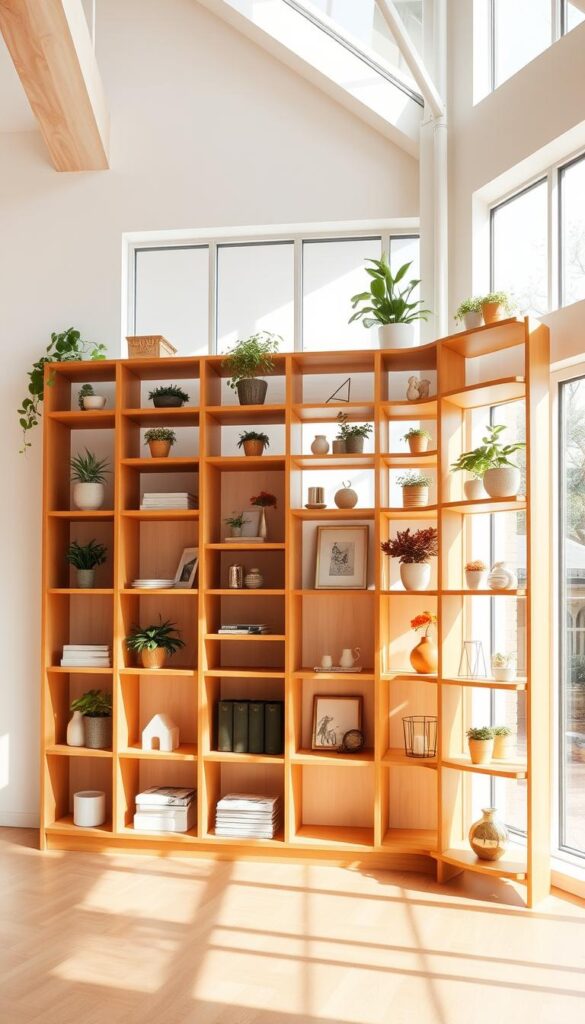
Using Decorative Boxes and Baskets
Swap plastic bins for woven baskets or patterned boxes. They’re not just pretty – they corral remote controls, charging cables, and that random pile of coupons. Pro tip: Label lids with chalkboard stickers for quick identification without sacrificing aesthetics.
Open shelves become design features when styled intentionally. Group books by color, then alternate with decorative boxes holding batteries or lightbulbs. Keep daily-use items like spices or coffee mugs within hand’s reach – no more climbing step stools mid-recipe.
Try these functional upgrades:
- Use tiered trays on kitchen counters to sort vitamins and mail
- Hang wall-mounted baskets near entryways for keys and masks
- Store off-season clothes in ottomans that double as seating
Remember: Your storage should be a natural part of your decor. That laundry basket? Make it a chic rattan number. Those toy bins? Opt for colorful cubes kids can access independently. When solutions look this good, staying organized feels less like chores and more like curating your space.
Incorporating Family in Your Decluttering Process
Who says tidying up has to be a solo mission? Turns out, clutter is a team sport – and everyone’s invited to play. Thomas Sanderson’s research shows households that tackle messes together maintain cleaner spaces 68% longer. Here’s how to turn “my problem” into “our project” without the eye-rolling.
Play to Their Strengths
Delegate tasks based on superpowers. Got a kid who loves sorting? Put them in charge of toy categories. Partner obsessed with labels? Hand them the marker. Even toddlers can match socks while you fold. The trick? Make roles feel intentional, not like chores.
Try this division of labor:
- Teens: Digital detox (old phone chargers, expired coupons)
- Kids: Sort toys into keep/donate bins
- Adults: Handle sentimental items and heavy lifting
Make sure everyone knows why their task matters. Explain how clearing the entryway means faster exits for weekend adventures. When family members see the impact of their work, they’ll push harder to finish.
Celebrate the Wins
Turn progress into shared victories. Did someone conquer the Tupperware cabinet? Cue the confetti (or at least extra screen time). Create a visible progress chart with stickers for completed zones – nothing motivates like friendly competition.
Three rules for success:
- Set clear end times (90-minute sessions max)
- Play upbeat music to keep energy high
- Schedule post-clean treats (pizza night beats lectures)
Controlling clutter becomes easier when it’s framed as improving family life. Those cleared countertops? Now pancake-making stations. The organized garage? Bike parking for weekend rides. Suddenly, you’re not just cleaning – you’re creating space for what matters.
Maintaining Momentum Beyond the Weekend
Congrats on surviving the purge – now let’s keep that energy alive. Think of your decluttered space like a plant: water it regularly or watch chaos creep back. Apartment Therapy’s study shows 88% of people who track progress maintain tidy homes long-term. Here’s how to make order stick without becoming a neat freak.
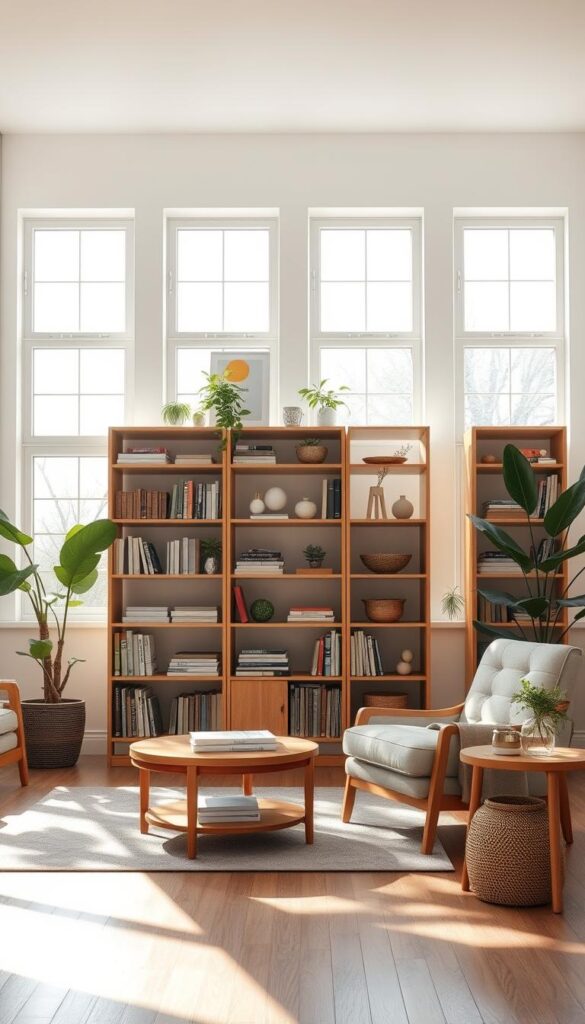
Try the “two-minute rule” daily. Found socks on the couch? Deal with them before the microwave dings. These micro-actions prevent pile-ups better than marathon cleaning sessions. Bonus: crossing tiny tasks off your list gives that sweet hit of accomplishment.
Track wins visually. Stick a calendar on the fridge – mark days you reset surfaces before bed. Three checkmarks in a row? Treat yourself to fancy coffee. Progress isn’t about perfection. It’s nailing 70% consistency.
Use stolen moments wisely:
- Sort mail during Zoom hold music
- Edit bathroom products while brushing teeth
- Scan pantry shelves while microwaving lunch
Your home’s a living space, not a museum. Schedule monthly “tune-up” hours to reassess systems. That junk drawer working? Keep it. Closet getting cramped? Time for another donation run. Remember: maintenance beats massive overhauls every time.
Time Management: Balancing Declutter and Other Tasks
Time management isn’t about having more hours – it’s about making the ones you’ve got punch above their weight. Kate from Fantastic Removals taught us this golden rule: “Schedule like a time ninja, not a martyr.” Let’s crack the code for fitting serious progress into packed days.
Effective Scheduling Strategies
Start by tracking your energy peaks. Morning person? Block 7-8 AM for heavy lifting. Night owl? Reserve post-dinner hours for lighter tasks like folding laundry. This isn’t about cramming – it’s strategic alignment. Studies show matching tasks to natural rhythms boosts efficiency by 40%.
Try this battle-tested framework:
- Power hours: 3 focused 25-minute sprints with 5-minute dance breaks
- Twilight zone: Use night hours for prep work (gathering supplies, labeling bins)
- End game: Always finish sessions by resetting tools – prevents tomorrow’s “where’s my marker?!” meltdowns
Balance is key. Pair sorting sessions with rewards – sort one closet shelf, then stream an episode. Need to end early? Leave a visible progress marker (like a filled donation box by the door) to maintain momentum.
Pro tip: Set phone alerts labeled “Triage Time” for quick daily edits. Found 10 bonus minutes before school pickup? Attack that junk drawer. These micro-wins add up faster than you’d think.
Decluttering Mistakes and How to Avoid Them
We’ve all been there – halfway through organizing when suddenly you’re surrounded by more chaos than when you started. Common slip-ups turn manageable projects into soul-crushing marathons. Let’s dodge those traps.
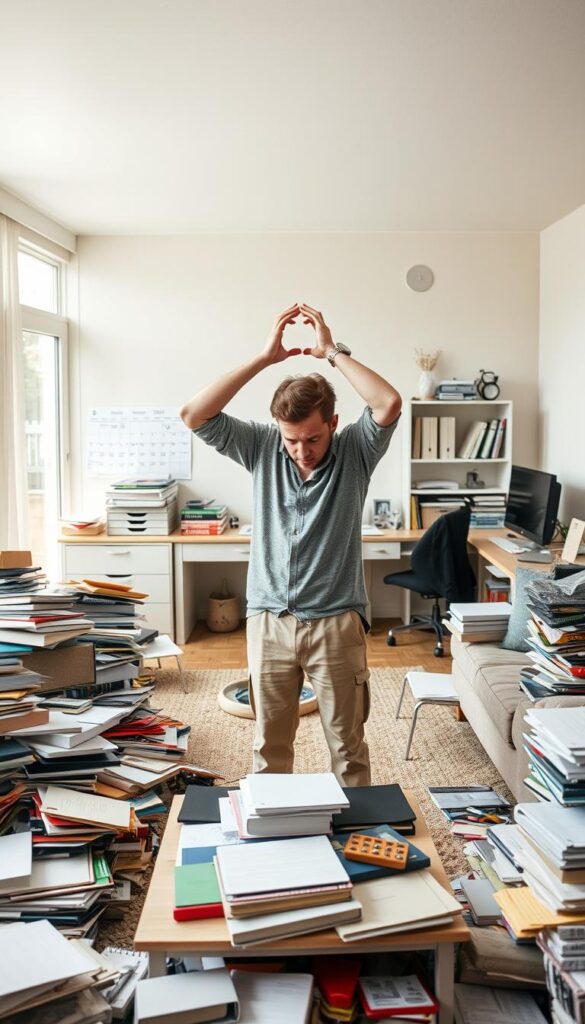
Common Pitfalls and Solutions
Mistake #1: Overcrowding a single room with “keep” piles. That guest bedroom becomes a storage unit in disguise. Solution? Limit each zone to three sorting boxes max. If items overflow, pause and reassess.
Mistake #2: Keeping duplicates “just in case.” Those five phone chargers? You might find three are outdated. Try this hack: store extras in a labeled bin for 30 days. Unused? Donate them guilt-free.
Watch for these sneaky errors:
- Letting sentimental items hijack your entire kitchen table
- Forgetting to measure storage spaces before buying organizers
- Assuming every room needs the same level of editing
Pro tip: When you might find yourself stuck, use the “four questions” test for questionable items:
- Have I used this in the past year?
- Does it serve multiple purposes?
- Could someone else benefit more?
- Does it spark genuine joy (not guilt)?
Remember: Decluttering isn’t about creating empty rooms. It’s designing spaces where your favorite items can shine. Miss a spot? That’s why donation centers have drop-off hours year-round.
Tips for a Stress-Free Decluttering Experience
Ever feel like your stuff’s got a death grip on your sanity? Interior designers reveal the magic lies in micro-actions over marathon sessions. Start with these battle-tested tricks to keep your cool while corralling chaos.
First – control your environment. Crank up Lizzo, open windows, and light a citrus candle. Studies show fresh scents boost focus by 31%. Keep a “victory box” nearby for quick wins – toss in expired coupons or lonely socks as you spot them.
Target specific areas using the paper plate method:
- Divide drawers into imaginary slices
- Handle one section before moving clockwise
- Celebrate each cleared zone with a sticker
Stuck on sentimental items? Ask: “Does this spark joy or obligation?” That vase from Aunt Edna? Snap a photo, then let it go. For daily maintenance, try these genius hacks from organization pros.
When overwhelm hits – pause. Breathe in for 4 counts, out for 6. Remember: progress beats perfection. That half-sorted bookshelf? Already better than yesterday’s hot mess. Keep water nearby, dance between tasks, and watch those manageable zones add up to real transformation.
Final Touches: Personalizing Your Organized Space
Think your space needs personality after clearing the chaos? Time to blend function with flair. Those bare shelves and empty corners are canvases waiting for your signature style – let’s make them work smarter and look sharper.
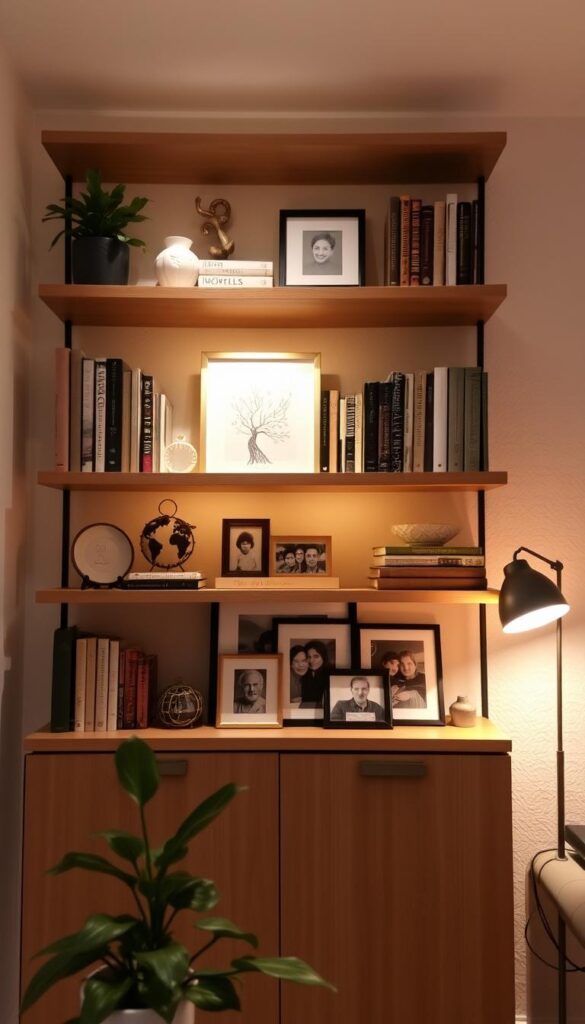
Adding Finishing Touches
Style those shelves like a pro. Alternate practical items with personality pieces – stack cookbooks beside that vintage cake stand you love. Got rid of clutter? Now display three meaningful objects where junk once lived. Pro tip: Use matching trays to corral remotes while adding texture.
Try these instant upgrades:
- Swap generic storage boxes for patterned ones matching your rug
- Hang floating shelves above desks for plants and inspiration boards
- Use colorful bins to hide dog toys while complementing throw pillows
Establishing Lasting Systems
Maintenance is the secret sauce. Set “no junk zones” where clutter dare not settle – maybe that entryway bench or kitchen island. Got rid of excess mugs? Keep the favorites visible so guests know where to grab coffee.
Build these habits into your routine:
- Sunday reset: 10 minutes to tidy high-traffic areas
- Monthly purge: Scan shelves for items to donate
- Seasonal refresh: Rotate decor when swapping holiday storage
That one weekend effort? It’s just the opening act. With smart systems, you’ll spend less time cleaning and more time enjoying spaces that truly reflect you – no storage unit vibes here.
Conclusion
What if your home could stay this zen? Those cleared surfaces and labeled boxes aren’t just weekend wins – they’re launchpads for calmer days. Remember Catharina’s golden rule: “Clutter grows in silence.” Fight back with daily micro-actions like resetting kitchen counters while coffee brews.
Your progress matters most when life gets messy. That shelf you organized last month? Still holding strong. The entryway drop zone? Stopped three shoe avalanches this week. Celebrate these quiet victories – they prove systems work better than willpower.
Stick with what clicks. If color-coded bins spark joy, expand them. Hate folding? Install more hooks. Homes thrive on personalized solutions, not Pinterest perfection. As organizing pro Lisa says: “Control your space, don’t let it control you.”
Bookmark those 15-minute power sweeps. Schedule monthly donation runs. You’ve done the heavy lifting – now enjoy breathing room that grows with you. Here’s to mornings without tripping over yesterday’s chaos!


